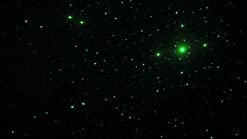
Regarding Digistar projector and its history
Evans and Sutherland have invented the Digistar projector and it was first released in the year 1983. The first computer graphics projector was known to be a Digistar projector that is based on content projection and planetarium projection. The high quality and accurate display of the stars were focused on the original technology of the projector. Other than the earth’s surface the stars can be shown with any of the points of view and also it travels through stars. And also the projector showing the accuracy of the celestial body even in the past and future at different times. A galaxy projector is weighing under a pound weight. While traveling it is perfect to use the galaxy projector for the trip and ready to turn a night. For projecting the pinpoint of light representing stars through the Digistar projection system, unlike the modern full-dome system that uses the laser projection technology. A large cathode ray tube is the heart of the Digistar projector. The top of the tube is mounted with the phosphor plate and the large lens is used to disperse the light with a hundred and sixty-degree field of view that covers the planetarium dome.
Projector definition:
An output device that is used to project an image on a large surface like a wall or white surface is called a projector. While being among a large number of people it is better to use the projector instead of the monitor or television. The projectors are commonly a few inches tall and about a foot long and wide and it comes in many shapes and sizes. The projectors are mostly mounted on ceiling and can be easily portable. Typically larger projectors are mostly mounted on the ceiling. Classroom, conference room, place of worship, and auditoriums are mostly found with the mounted ceiling projectors. Where ever you have a white surface you can make use of the portable projectors.
History of Digistar projector:

The brainchild of Stephen McAllister and Brent Weston was known as Digistar, both were known to be the long term amateur astronomers and computer graphics engineers. Proof of concept software was written by McAllister in summer 1977 for the consultation that entered the stars for four hundreds of bright stars. And then the software was written by McAllister to display the stars. As a celestial navigation training Steve and Brent, both focus on the purposes of the system. To overcome the limitation of the traditional star ball technology is the primary goal of the planetarium system which allowed the display of the starfield from the view of the earth’s surface. The stars could be displayed on the proper surface from the viewpoint by using computer graphics which includes the stimulation of the space light appearance. For any time in history and at any point of view planets, moon, and solar system can be displayed accurately in a clear point of view. From the Yale Bright Star Catalogue, the system can make use of the location of the real stars. To generate the starfield and the tactical displays, a laboratory prototype of Digistar is used in the science fiction film. Directly from the Digistar display in the lab, the science fiction filming was done.
